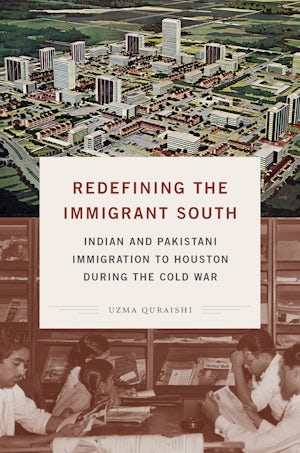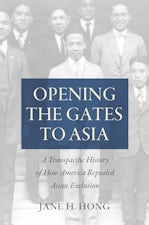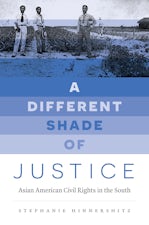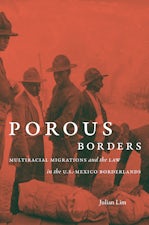Redefining the Immigrant South
Indian and Pakistani Immigration to Houston during the Cold War
By Uzma Quraishi
336 pp., 6.125 x 9.25, 7 halftones, 12 maps, 11 tables, appends., notes, bibl., index
-
Paperback ISBN: 978-1-4696-5519-2
Published: May 2020 -
Hardcover ISBN: 978-1-4696-5518-5
Published: May 2020 -
E-book EPUB ISBN: 978-1-4696-5520-8
Published: March 2020 -
E-book PDF ISBN: 979-8-8908-5866-5
Published: March 2020
New Directions in Southern Studies
Buy this Book
- Paperback $32.50
- Hardcover $99.00
- E-Book $22.99
For Professors:
Free E-Exam Copies
Awards & distinctions
2021 Theodore Saloutos Book Prize, Immigration and Ethnic History Society
2022 Association for Asian American Studies Award for Best Book in History
Honorable Mention, 2021 Pacific Coast Branch Book Award, American Historical Association, Pacific Coast Branch
Mining archives and using new oral histories, Uzma Quraishi traces this pioneering community from its midcentury roots to the early twenty-first century, arguing that South Asian immigrants appealed to class conformity and endorsed the model minority myth to navigate the complexities of a shifting Sunbelt South. By examining Indian and Pakistani immigration to a major city transitioning out of Jim Crow, Quraishi reframes our understanding of twentieth-century migration, the changing character of the South, and the tangled politics of race, class, and ethnicity in the United States.
Published in association with the William P. Clements Center for Southwest Studies at Southern Methodist University in Dallas, Texas
About the Author
Uzma Quraishi is assistant professor of history at Sam Houston State University.
For more information about Uzma Quraishi, visit
the
Author
Page.
Reviews
“This book provides greater nuance to historical studies of Asians in the South, but it also reiterates the significance of an intersectional and relational approach to the study of racial formation.”--CHOICE
"Quraishi’s study of Indian and Pakistani immigration to Houston is not limited to the Cold War, and the migration patterns of South Asian Americans in the area continue to evolve to this day. Overall, Redefining the Immigrant South is a welcome contribution to a growing body of literature in Texas community studies."--Southwestern Historical Quarterly
"An expansive transnational history. . . . A wonderful contribution to a growing collection of ethnic southern histories that examine the region’s global connections, legacies of antiblackness, marginalization of Asian and Latinx communities, and the South’s diverse metropolitan spaces."--The Metropole
“Quraishi has offered a detailed history that situates South Asian migration to Houston within larger global, national, and regional histories… This is a nuanced story that both documents achievement and success while demonstrating the extent to which South Asian migrants during the Cold War benefitted from national civil rights and immigration reform…” – Diplomatic History
“Engaging…a helpful book for scholars of South Asian studies to understand this diaspora’s complex racial, ethnic, and religious positioning – and long historical presence – in America.” – South Asian Diaspora
“Quraishi has written a well-documented and engaging book. It was a pleasure to read. She studies the first generation of South Asians in Houston after 1965 and gives a picture that is not common among histories of immigration.” – The Journal of Southern History




